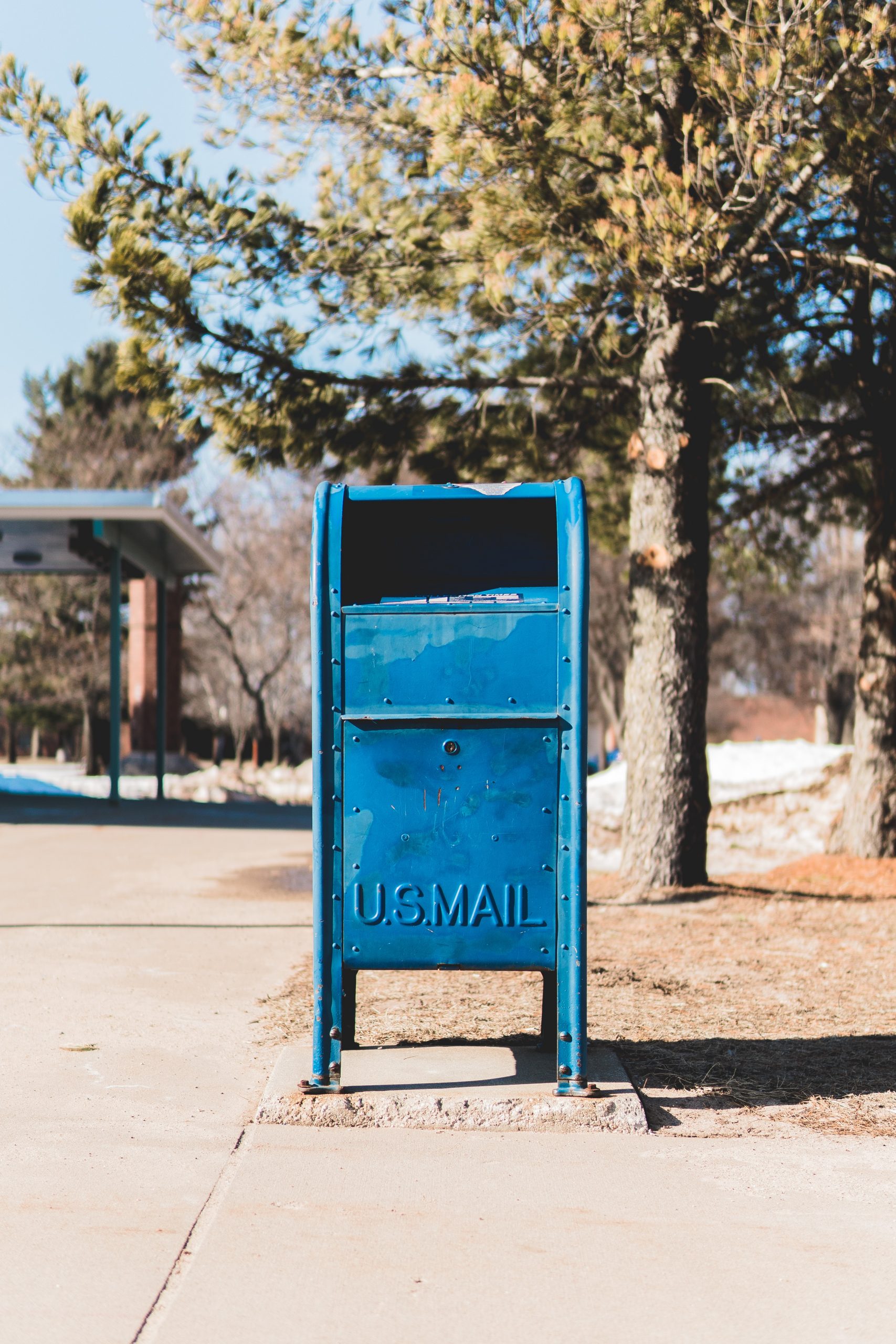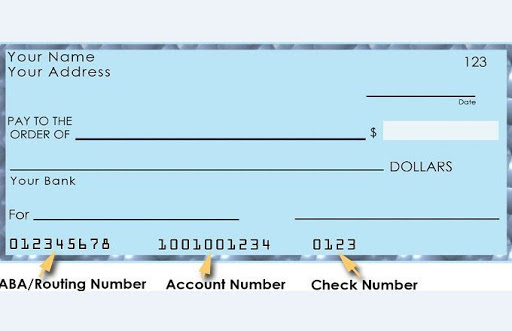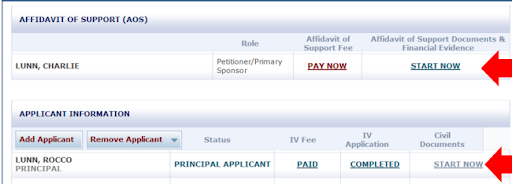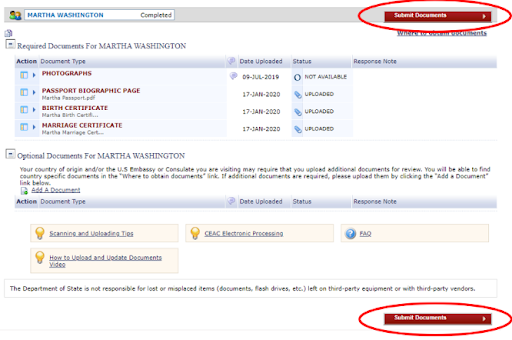What the NVC Needs From You
To get your green card through a U.S. Consulate, you have to know what to send the NVC. Below you can learn more about what you need to send to keep things moving along. If your I-130 petition has not been approved, then you are not ready to send stuff to the NVC, and instead you have to check up on your I-130 case status. And if you’re encountering delays at USCIS, you can learn more here.
Generally, the NVC needs three things from you: fees, applications and documents. All three are sent through the Consular Electronic Application Center or CEAC for short.
Once you log into CEAC, you’ll see something like this:

In the next section we’ll discuss how to send the first thing needed, which is fees.

Fees
The first item to send the NVC is money. As you can see on the CEAC home screen, there is a link to pay fees. There are two types of fees relating to your immigrant visa application: fees for the visa ($325); and fees for the affidavit of support ($125).
Please note: you cannot start your immigrant visa case until the fees are paid, and the $325 fee is required for each person who is seeking a green card. Example: if a spouse and child of a U.S. citizen want to immigrate to the U.S., then the $325 will need to be paid for each of them.
You will need to have a U.S. bank account in order to pay the fee. The system will ask you for the account number, routing number and your personal information. The easiest way to find this information is by looking at a check from a bank checking account. See below.

If you do not have a check handy, then it is best to login into your bank account online and search for this information. Alternatively, you can make a trip to your bank and ask them for it.
Once you have paid the fees through CEAC, it will take about three days to process. Be patient, because the NVC case system moves slowly. You should also know that you will not receive email or mail notification that the fees have been paid. To find out, you will need to login to the NVC CEAC system to confirm. Once the fees show as “Paid,” then you can proceed with completing your immigrant visa application, on Form DS260.
Immigrant Visa Application (DS-260)
Next you’ll need to send the NVC your application. You’ll upload your visa application through their system. Lets take a look back at the screenshot:

Under the applicant portion, confirm that the fees should show as “PAID.”
The next step is to click on the link under “IV Application.” This is the link for completing your DS260. Once you are on the page, you will see that the application appears long and complicated. You can find a sample DS-260 here.
To make things easier, you should gather the following information before you fill out the DS260:
- Applicant’s full name
- All the information on his or her valid unexpired passport
- The Applicant’s current address and all addresses since he or she was 16 years old
- The names, dates of birth and location of the Applicant’s parents, child, spouse and other immediate family members.
- Information about the Applicant’s visits to the U.S.
- Information about all of the Applicant’s criminal and immigration violations from the past.
Supporting Documents
Once you have completed the DS260 and submitted it, then the NVC CEAC system will allow you to upload the required supporting documents. The NVC CEAC online system will not let you upload anything with first submitting the DS260, so make sure this is complete before you move on to this step.
Here is what the screen to upload documents looks like:

The “Submit Documents” button is circled to remind you that the NVC system only lets you submit documents after all of the documents are uploaded.
You will now need to digitally scan the documents listed below. Before you do, remember that all scans must: 1) Be in color; 2) Be under 2 megabytes in size; and 3) Be either in .pdf or .jpg format. With that in mind you will need to scan and upload the following documents.
Remember that each person’s case is different, so the list of documents needed may be slightly different for your case. But generally, these are the documents required:
- Your passport information page. This is the page with your picture, name and other information
- Your birth certificate with translation, if necessary
- Your marriage certificate, if you have one. You will also need to translate this if in a foreign language.
- Any divorce decrees, if they exist. You will also need to translate them if in a foreign language.
- Any Court or Prison documents if you have ever been arrested in any country.
- Police certificates for every country you have lived in for more than 6 months since you were 16 years old. Police certificates are different depending on the country so you will need to check the specifics on the Department of State Reciprocity Table.
- The family member who petitioned for you will also need to submit their U.S. Passport, Taxes and form I-864



